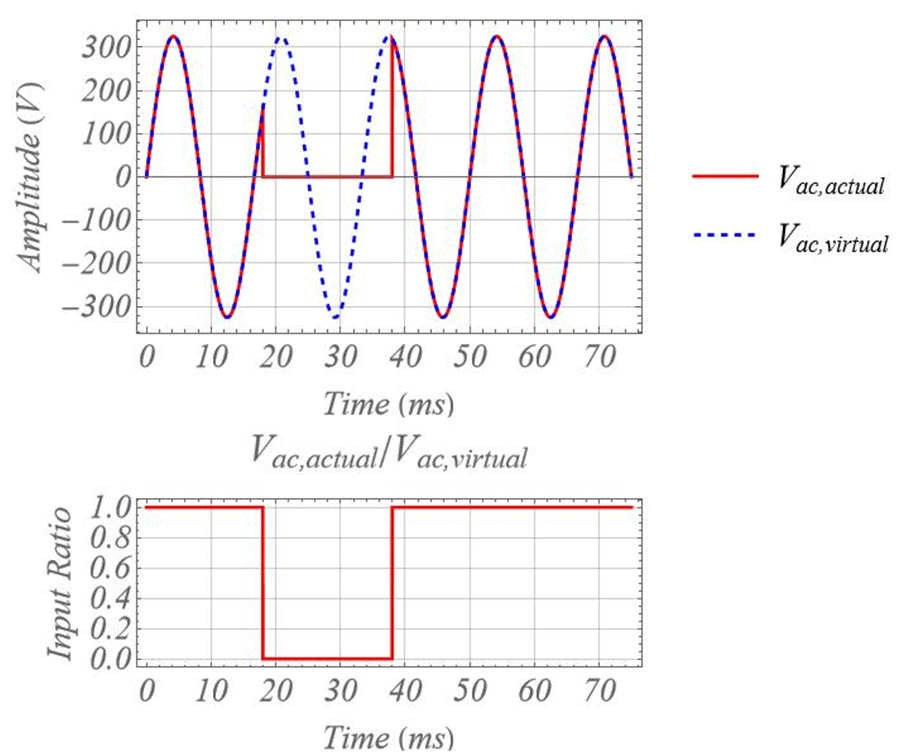SLYT844 September 2023 LMG3522R030 , TMS320F280049C
4 AC dropout solution
In order to precisely determine the presence and absence of the AC input, the solution uses a virtual AC input signal that monitors the integrity of the actual AC input. This virtual signal is generated by measuring the input voltage amplitude, frequency and phase, such that during normal operation it tracks the 50- and 60-Hz component of the actual AC input nearly perfectly. The system can easily recognize the presence and absence of the AC input voltage by comparing the actual input to the virtual input. Any sudden changes in the difference between these two signals indicates an input transient event. It is this transient event that is used to detect both the loss and restoration of the AC input voltage. Figure 3 illustrates the virtual AC input, along with the actual input during a dropout event.
 Figure 3 AC input dropout with the
virtual AC signal.
Figure 3 AC input dropout with the
virtual AC signal.Figure 4 illustrates the state machine that governs the dropout and restore process. During startup, the system goes through an initialization cycle (Sync Init) where it determines the RMS input voltage magnitude. It uses a software phase-locked loop (SPLL) to ensure that the phase of Vac,virtual matches Vac,actual. Once the SPLL is locked (Sync On), the processor monitors the ratio between Vac,actual/Vac,virtual (see Figure 3). If this ratio is less than the target threshold, then a dropout event is declared and switching stops immediately (Stop State). From here, the system clears any faults that occurred and goes into a standby state (Ready), where it monitors the Vac,actual/Vac,virtual ratio to determine when it goes above the resume threshold. Once the state machine has determined that AC is restored, it resumes switching immediately and resynchronizes the SPLL (Resume State). By using the Vac,actual/Vac,virtual ratio in concert with the SPLL, the algorithm is able to determine the AC dropout and restore times for any input voltage or frequency. In addition, since the algorithm always monitors the ratio Vac,actual/Vac,virtual, it is able to respond more quickly than a traditional level-based-solution that detects when the AC input voltage goes to zero. Level-based monitoring for dropout can create delays that can result in large current spikes and significant reverse current.
 Figure 4 AC dropout and restore state
machine.
Figure 4 AC dropout and restore state
machine.